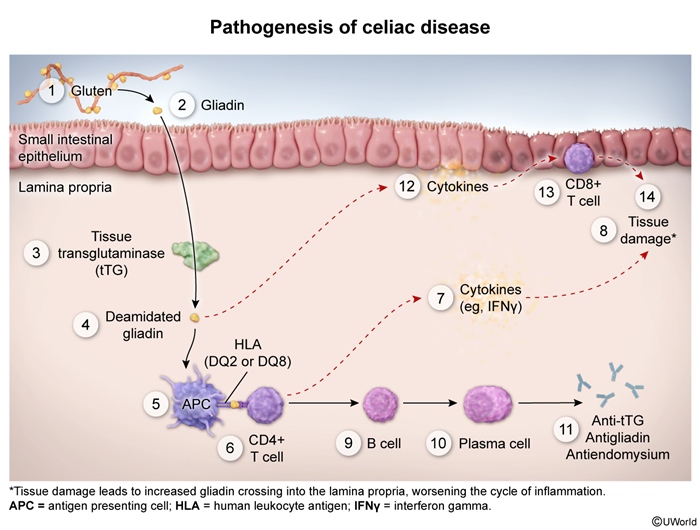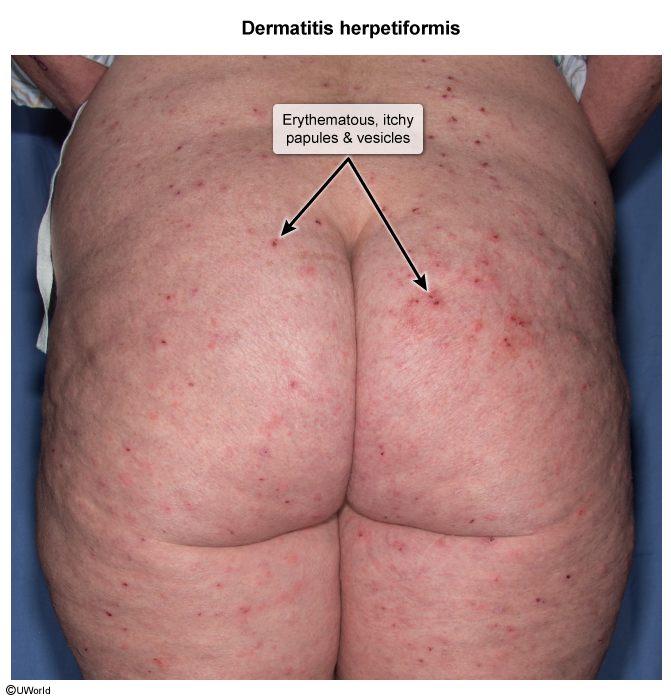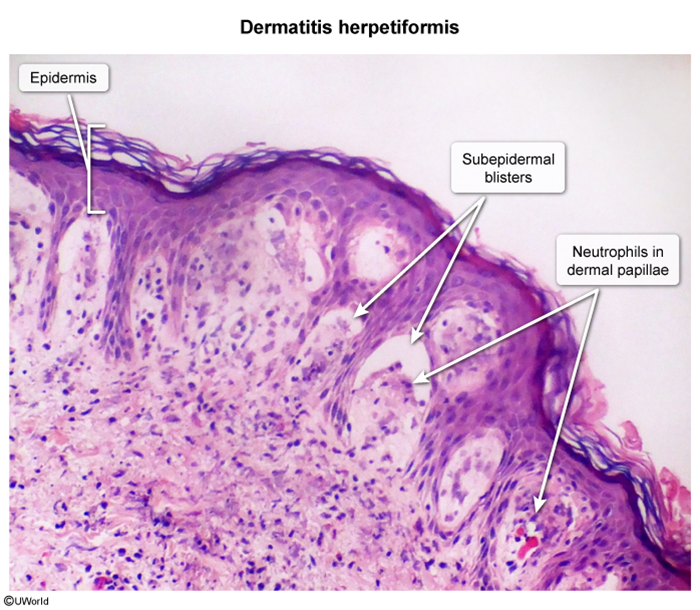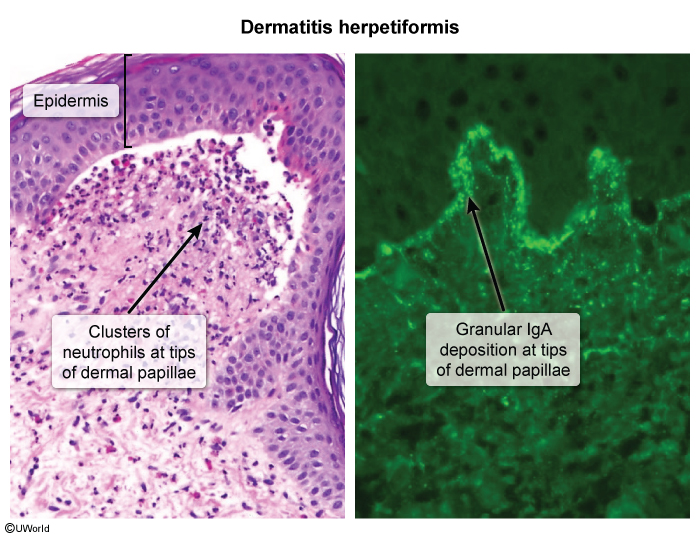Dermatitis Herpetiformis
Article Sections
Introduction
Dermatitis herpetiformis is a cutaneous manifestation of gluten sensitivity that is characterized by clusters of erythematous papules, vesicles, and bullae on the extensor surfaces (eg, elbows, knees), buttocks, and back. Herpetiformis refers to the resemblance of the clustered vesicles to those of herpes simplex. Most patients (ie, ~90%) have underlying gluten-sensitive enteropathy (ie, celiac disease), even if asymptomatic.
Pathogenesis and risk factors
The pathogenesis of dermatitis herpetiformis involves gluten exposure in a genetically susceptible patient.
Following the absorption of gluten, gliadin peptides elicit a T-cell–mediated inflammatory cascade (Figure 1). Gliadin is absorbed into the intestinal mucosa and deaminated by tissue transglutaminase in a process involving formation of covalent crosslinks between them. Because of this, the subsequent immune response against gliadin also targets tissue transglutaminase. The deaminated gliadin then binds to the surface of antigen-presenting cells (primarily
Continue Learning with UWorld
Get the full Dermatitis Herpetiformis article plus rich visuals, real-world cases, and in-depth insights from medical experts, all available through the UWorld Medical Library.
Figures

Images



